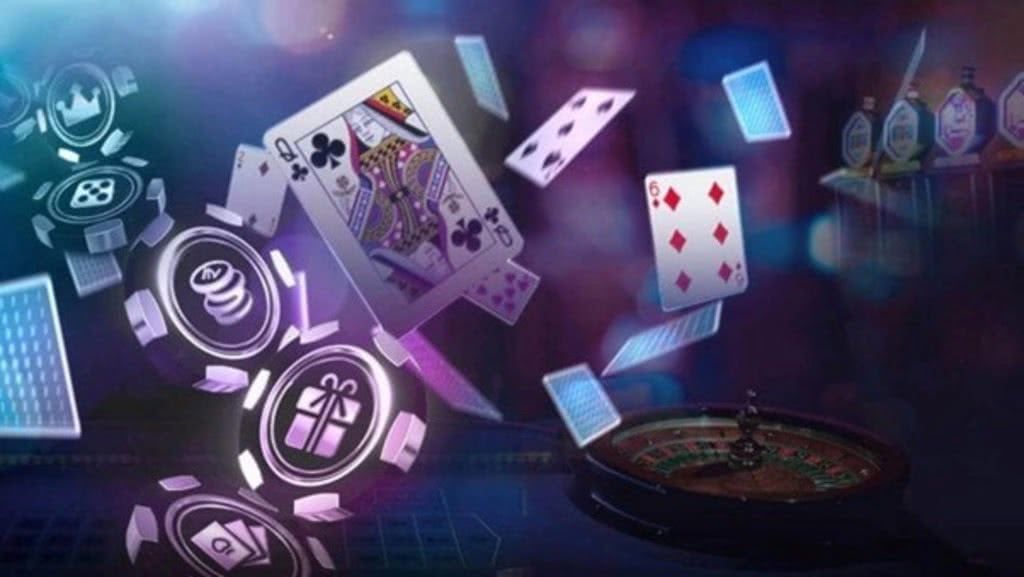- A Global Filming Guide: Do’s, Don’ts, and Must-Knows - February 14, 2024
- Low-Income Americans’ Surprising Spending Habit - December 4, 2023
- France’s Startling Act of Aggression - December 1, 2023
So, what exactly is rummy in the world of blackjack? The phrase can be construed in a variety of ways. However, based on how the question is phrased, it is most likely related to a side bet that you have the option to place. That will be explained later. Following that, I’ll go over several additional blackjack usage of the term “rummy.”
A rummy is made in blackjack by three cards with the same rank, three cards with neighboring ranks, or three cards with the same suit. Your first two cards plus the dealer’s up-card make up the three cards. The rank is represented by the number or character displayed on the card. For example, if you have a 4, 4, and the dealer also has a 4, you both have a rummy hand.
The card ranks are as follows: Ace, 2, 3, 4, 5, 6, 7, 8, 9, 10, J, Q, K, and Ace. Adjacent ranks are just the numbers in this sequence that are next to each other. If the dealer has a nine and you have a seven and an eight of any suit, for example, and those cards are in your hand, you have rummy.
The suit on the card is indicated by the club, diamond, heart, or spade. If you held the seven and eight of hearts and the dealer held the ace of hearts, you would have a rummy hand. In the world of poker, this is known as a “3-card flush.”
Why is Rummy Knowledge Necessary When Playing Blackjack?
In some casinos, you may be able to participate in an additional wager known as a “rummy bet.” The reward for getting a rummy varies from casino to casino, although it’s usually around 9 to 1 in most circumstances. If you do not receive a rummy, which is the vast majority of the time, you will lose that side bet. You should also be informed that the game will continue regardless of whether you win or lose the rummy side bet in which you are participating. The side bet on rummy has no effect on the main action or the rummy bet. The primary action has no bearing on the rummy bet.
Odds on Rummy Side Bets
Assuming a payoff of 9 to 1, the percentage that the house has an edge over the player for the rummy side bet is 4.14 percent (according to Bovada). Those are terrible odds, in case you were wondering. This should come as no surprise to anyone. Side bets are almost never a good idea when playing blackjack.
When playing the main game of blackjack, the house has an edge of less than 1%. This is predicated on the assumption that you have mastered the basic approach, which is not difficult in any case. As a general rule, you should stick to games with a lower house edge rather than those with a higher house edge. It is a popular side bet that can be placed at online casinos affiliated with sportsbooks such as 5Dimes and Bovada.
In Costa Rica, Rummy is a fun and exciting alternative to blackjack
In Costa Rica, playing blackjack is a crime. To get around this prohibition, the majority of Costa Rican casinos provide a different version of rummy to consumers.
The following is a guide to playing rummy in Costa Rican casinos
Rummy is played on a table about the size of a blackjack table, with room for seven players and a dealer. The rules may differ from one casino to the next, but they are widely accepted fundamentals.
Standard playing cards are utilized, with the dealer employing four to six decks. You are dealt two cards, just like in blackjack, except the payoff for blackjack is NOT 3 to 2. Calculating points in blackjack follows the same rules as it does in poker. The ace and 10 (or any face card) are still regarded to be worth 21.
The dealer must make a bet on a soft 17 or higher. You may surrender early, and you may double down on any two cards, including those that have been divided. You can also re-split pairs, including aces, but you can only do so four times. However, split aces are not authorized at this time. In addition, instead of the blackjack bonus payment, you will get bonuses based on the following conditions if you have a three-of-a-kind or a three-card straight flush:
- The payoff for three of a kind is three to one, but it raises to five to one of the three cards are all of the same suit or a total 21. A three-card straight flush pays three to one, but if the hand totals 21, you get five to one.
- Even if you lose all of your money, you are still eligible for the additional incentives.
- The bonus prizes will be applied to the new total amount after you have doubled your original stake. But… You will not be eligible for any further payments if you divide your cards earlier in the hand.
Rummy and Blackjack Playing Instructions
If you are absolutely unfamiliar with blackjack rules, the following explanation should get you started.
The dealer will deal you two cards while holding two for herself. Because she shows you one of her cards, you are aware of the cards you have in your hand as well as one of hers. If the amount is 22 or greater, the hand is a loser. Each card is worth the number of points indicated on its face; for example, seven spades are worth seven points. Each of the face cards is worth ten, while the ace can be worth one or eleven.
Your goal is to win against the dealer. You can achieve this goal if your total is greater than the dealer’s or if you remain in the hand after the dealer has gone bankrupt. You are the first to act, and you must decide whether to “hit” for more cards or “stand” on the amount you already have.
You can also choose to double your bet or split it with another player. To “double down,” you must first double your original wager and then draw exactly one extra card to your hand.
You must have at least two cards of the same rank to split. You place another bet, and the two cards you were dealt become the initial card of two new hands, respectively.
Rummy Blackjack Probabilities, the House Advantage, and a Simple Strategy
The “house edge” is the criterion used to calculate the probabilities of winning in a casino game. This is a long-term estimate of how much money you might lose on each bet. The house edge in blackjack games, including Costa Rica rummy, is computed on the assumption that you would apply the best strategy available. This is known as the “basic approach.”
If you play Costa Rica rummy with perfect fundamental strategy, the house has a 1% advantage over you. The house has a bigger than thirty percent edge in casino games where the player has the least probability of winning.
The majority of gamblers deviate from the core strategy because they are acting on a hunch or have not committed it to memory. As a result, the house has a two to four percent advantage over the player, therefore learning the basic technique is in your best interest. Fortunately, the fundamental strategy for rummy blackjack is pretty simple:
Splitting
The first thing you must do is determine whether or not you have a divable hand. This means that you must possess a pair. You’ll never be able to tell these two apart:
In the following situations, you must distinguish the following pairs:
- 6s if the dealer’s card has a 5 or a 6.
- 7s if the dealer has a 4, 5, or 6
- 8s if the dealer has an 8 or lower.
- 9s if the dealer has a 9 or lower (except when the dealer has a 7); aces unless the dealer has an ace; hard and soft hands
If you don’t have a pair, you must select how to play your hand based on whether your total is hard or soft. A soft total is one in which the player possesses an ace, which can be counted as 1 or 11, depending on the situation. A tough hand is one in which you do not have an ace or your ace must be counted as one to save you from going bust.
Here’s how to make use of your weak hands:
- At all times, keep a soft 12 or lower.
- If the dealer has a 5 or 6, you should double down, but on a soft 13, you should hit.
- If the dealer’s up card is a 4, 5, or 6, you should hit on a soft 15, but otherwise, double down.
- Furthermore, unless the dealer has a 3, 4, 5, or 6, you should hit on a soft 17.
- On a soft 17, you should stand if the dealer has a 9 or higher, but you should hit if they have a lesser number.
- Regardless of the situation, always stand on a 19 soft or higher.
You should play your challenging hands as follows:
- Always attempt to keep the sum of all challenging tasks at or below 8.
- If the dealer’s up card is a 3, 4, 5, or 6, you should double down; otherwise, you should hit a hard 9.
- If you have a hard ten or eleven, you should double down unless the dealer has a ten or an ace, in which case you should just hit.
- You should hit a solid 12 if the dealer’s up card is a 2, 3, 7, 8, 9, or 10. If this is not the case, take a seat.
- You should stand on a hard 13, 14, 15, or 16 if the dealer’s card value is 6 or lower. Hit in any other scenario.
As a rule of thumb, select a hard 17 or higher as your stand. If you want to learn more about the house edge, read Tim’s article where he describes how expected value can be either negative or positive. Once you understand the game, the house edge, and the volatility, you will be able to decide how much money to bring to the casino. You can find out more about it right here.
Conclusion
That should address almost all of your questions regarding what rummy is and how it works in blackjack. That takes care of the supplemental wager, which is commonly encountered in sports books. It also covers the game played in Costa Rica that is meant to be played in place of true blackjack.
- Before Playing Any Casino Games, It is Strongly Recommended That You Read the Following Ethic Rules
- Bet on the Safe Side: Online Casino Security Tips
- Can You Put Your Trust into an Online Casino?
- How Does Data Encryption Work in Online Casinos?
- Online Gambling: A Geeks’ Guide That Isn’t Quite Designed for Novices
- The Reality Behind These 7 Common Casino Myths

